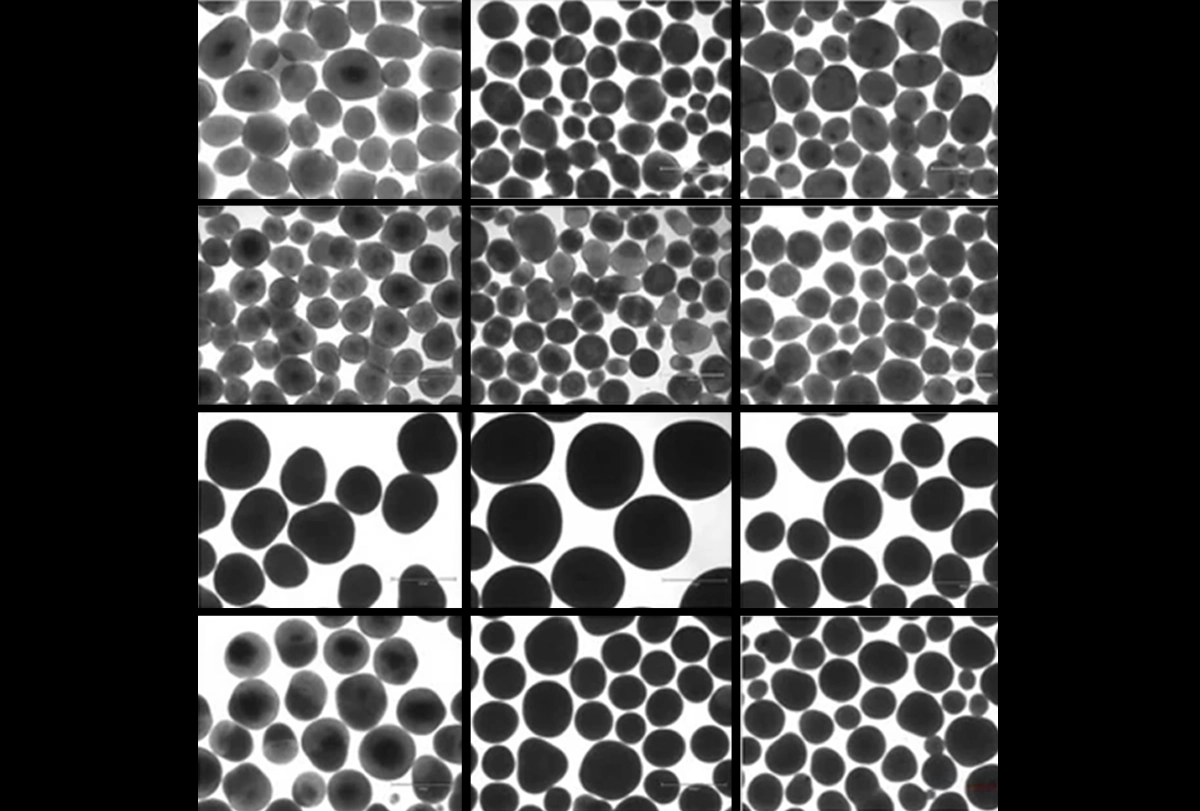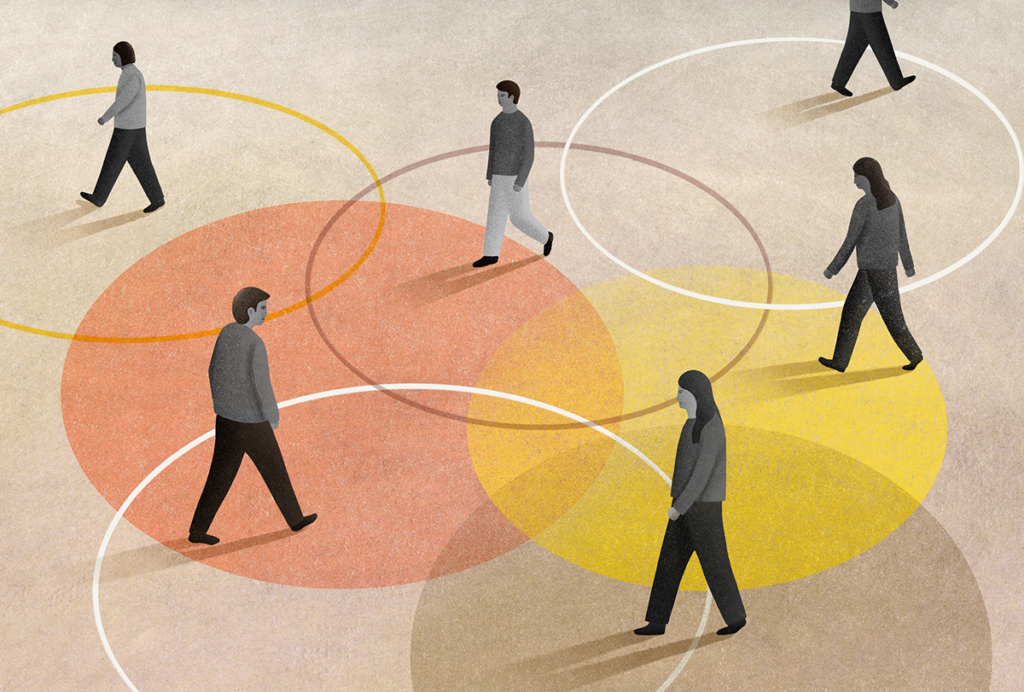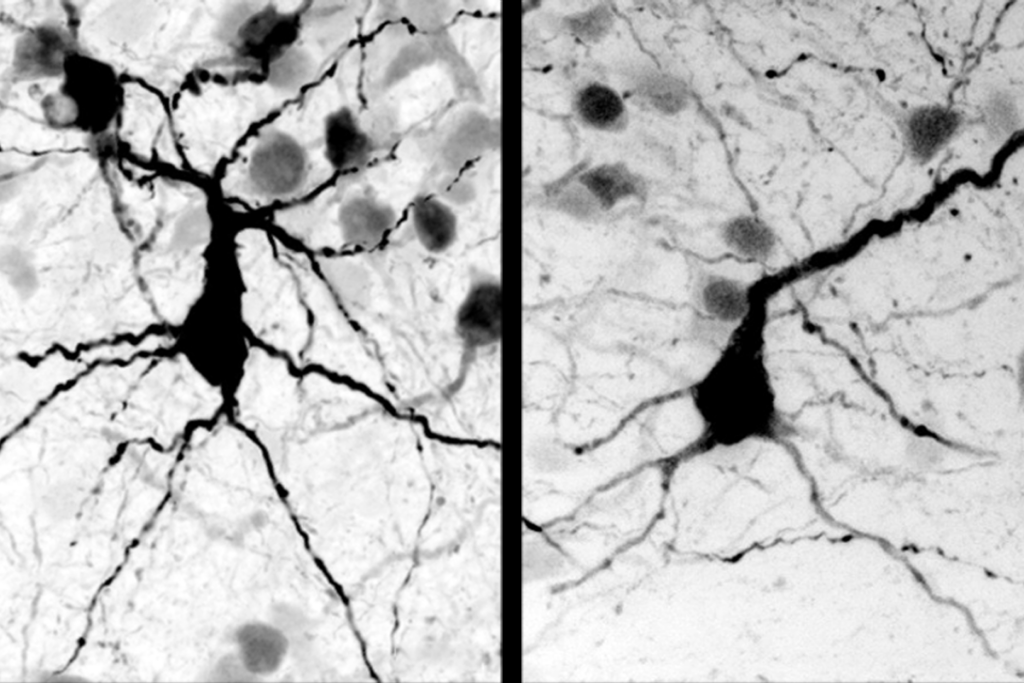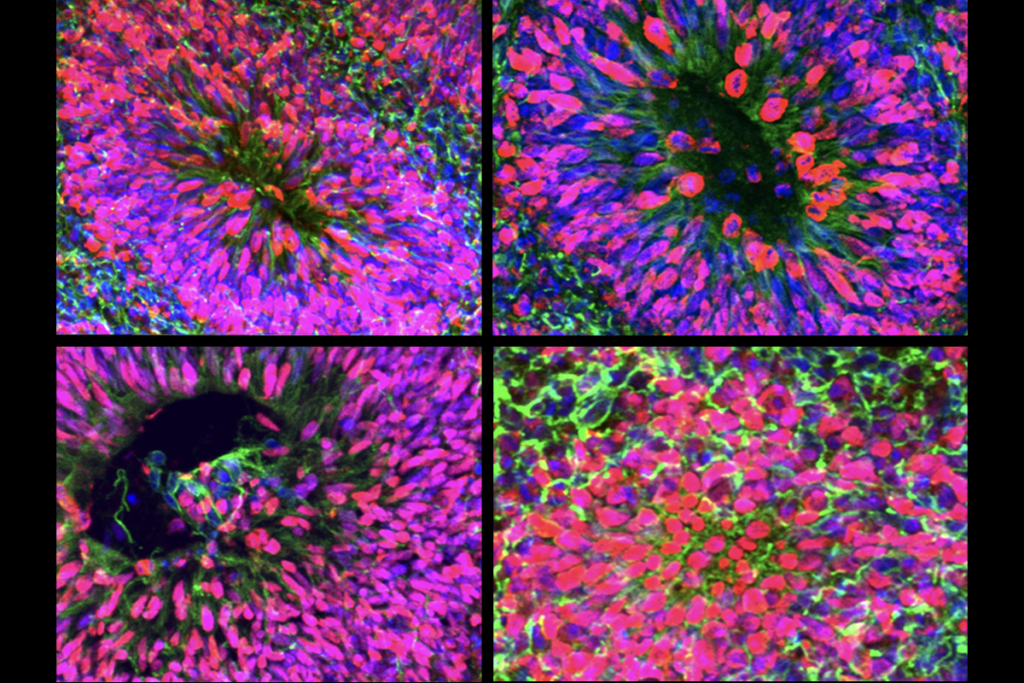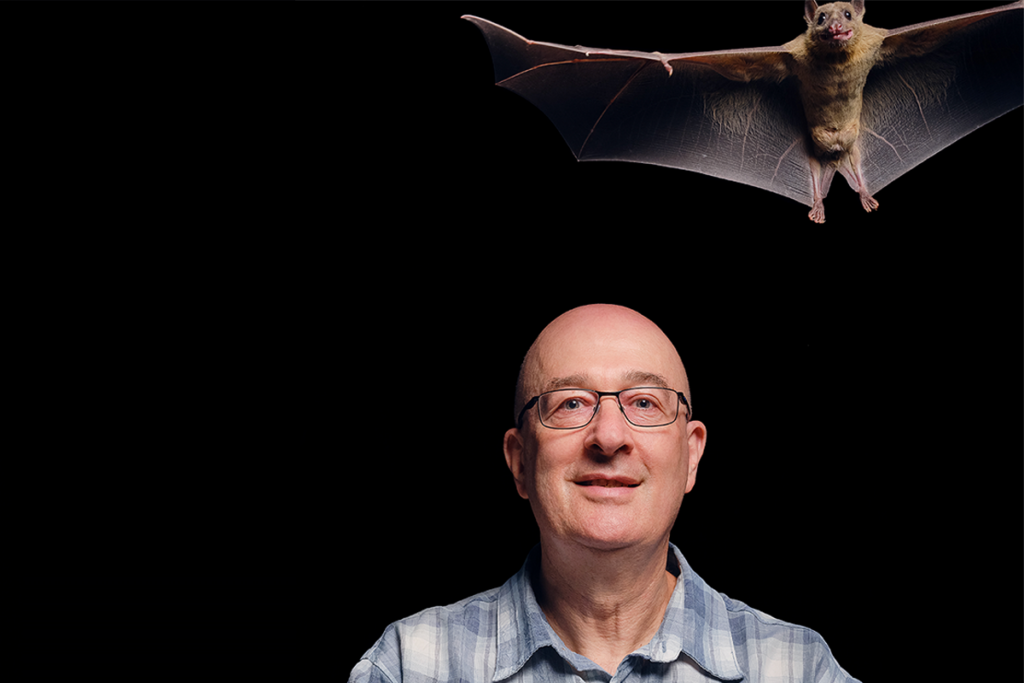Stem cells from autistic toddlers with prominent social and cognitive challenges form larger cortical organoids than do those from toddlers with milder forms of autism, according to a new study co-led by Eric Courchesne and Alysson Muotri at the University of California, San Diego. The findings suggest that larger-than-usual brain size—previously reported in some autistic children—is related to key autism traits.
“Brain size is an indicator,” says Muotri, professor of pediatrics and cellular and molecular medicine at UCSD. More specifically, he explains, the large size hints at an overabundance of neurons that may interfere with neuronal circuits.
Some developing fetuses later diagnosed with autism have larger heads than non-autistic fetuses, previous work by other researchers has shown. Their bigger brains may be caused by accelerated proliferation of excitatory neurons, according to another study.
Organoids cultivated from stem cells taken from 10 autistic toddlers were 39 percent larger than those coming from 5 non-autistic children, the new study showed. “You could tell which [organoid] was which just by looking at them. It was quite obvious,” Muotri says.
Size also correlated with intensity of autism traits: The largest spheres of cultured neurons derived from children with the lowest scores on tests measuring IQ, social attention and language. Cells taken from these 3 toddlers formed organoids 102 percent larger than those from 7 toddlers diagnosed as mildly autistic.
“We found the larger the embryonic BCO size, the more severe the child’s later autism social symptoms,” said Courchesne, professor of neurosciences at UCSD and co-director of the Autism Center of Excellence in the neuroscience department. “Toddlers who had profound autism, which is the most severe type of autism, had the largest BCO overgrowth during embryonic development. Those with mild autism social symptoms had only mild overgrowth.”
Combining the organoid findings with brain imaging in the toddlers and observation of enzyme activity in organoids, the authors argue that alterations in pathways that regulate neuronal proliferation in utero determine who may develop mild versus profound autism.
“Anytime you can correlate any model with patient’s characteristics is wonderful and validates the model that you are using. It’s admirable that the authors were able to do this,” says Flora Vaccarino, professor of neuroscience at Yale University, who was not involved in the study.
But correlations have their limits. “The conclusion is logical, but evidence for causality is lacking,” says Tomasz Nowakowski, associate professor of anatomy, psychiatry and neurological surgery at the University of California, San Francisco, who wasn’t involved in the work.
S
tructural MRI of the autistic participants’ brains revealed up to a 50 percent overgrowth of brain regions involved in language, sensory processing and social interactions relative to those without the condition. Just like their corresponding organoids, toddlers with profound autism showed the most increases in brain volume.In a separate experiment, the researchers found that NDEL1—an enzyme involved in neuronal growth in embryos—was less active in the autism organoids than in controls. NDEL1 activity correlated with organoid size, with the largest spheres exhibiting the lowest levels of the active protein. But NDEL1 activity did not appear to correlate with social and cognitive scores, suggesting that other genes influence autism traits.
The scientists detailed their findings on 25 May in Molecular Autism.
The work illustrates the insights to be gained from organoid models, Nowakowski says. Scaling up the study may one day uncover more nuanced changes in autistic people with specific clinical characteristics, he adds.
But until the study is replicated with a larger number of participants, Nowakowski warns against drawing firm assumptions from a small and highly variable sample. And even if the findings hold up in a larger sample, the study’s correlational nature means we cannot be sure whether low NDEL1 activity or accelerated brain growth causes autism traits, he adds.
And organoids derived from the same person can grow in an assortment of sizes, including spheres of cells that could be of interest, fragments of organoids, or blobs that have fused together. This variation requires researchers to select legitimate organoids, a decision that may vary between labs, Vaccarino says.
Because of this ambiguity, “it might be better to choose measures that are less subjective, like gene expression,” Vaccarino says. (Organoids derived from autistic children with enlarged heads—known as macrocephaly—show increased expression of specific genes than do those from autistic children without macrocephaly, previous work by Vaccarino’s group has shown.)
F
uture work by Muotri’s group aims to confirm their initial findings in a larger sample and uncover how brain overgrowth influences social and cognitive traits. By stimulating or inhibiting neuronal proliferation, they plan to investigate whether an excess of neurons inhibits connectivity in the organoids, Muotri says. If those experiments prove promising, the findings may bolster the theory that overconnectivity within certain brain regions drives autism.But rather than focusing on neuronal numbers, the researchers ought to see which cell types are most affected, says Sundari Chetty, assistant professor of psychiatry at Harvard Medical School, who was not involved in the work. Doing so “would help in tailoring therapies to target these cells directly in different subtypes of autism,” she says.
Autistic people are known to have elevated populations of excitatory neurons and microglia, but whether these cells also correlate with social problems is unclear. “Future work aimed at getting into the mechanisms would be very informative,” Chetty says.
